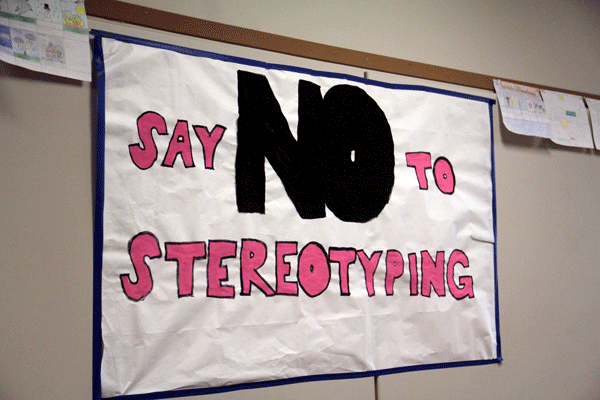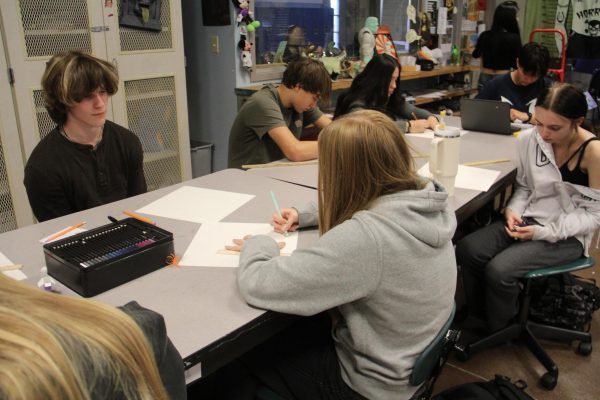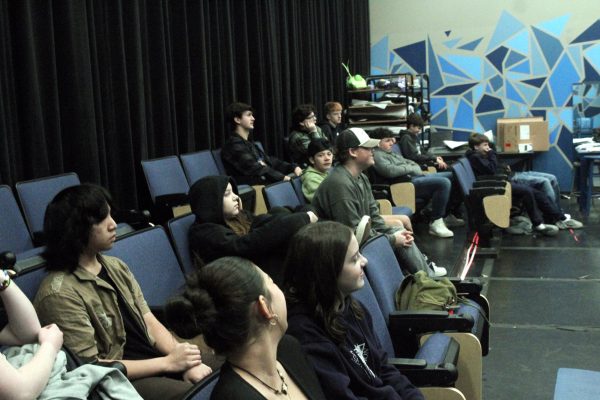Think Twice Before You Speak
Bringing awareness to stereotyping.

Located in the lower C wing, this poster promotes the movement of stopping stereotyping here at AHS. Posters like this can also be found throughout the rest of the school.
Stereotyping is something that schools all across the nation want to avoid from happening on their campuses. The labeling of an individual into different social groups based on race, gender, or interests can have a negative effect on both the individual and the school’s atmosphere. Whether or not you believe stereotyping is a problem here at AHS, we must still take note what stereotyping can do and the impact it may potentially leave.
For Mr. Cunningham, he doesn’t see stereotyping as a problem. “I think that the sheer size of our school, I don’t see it as a problem–I see it as a by product,” he said.
In order to truly understand stereotyping, we have to put it in perspective. Let’s take, for example, the “stereotypical” image of an athlete (popular, outgoing, attractive). Now let’s say that they love to write and, even better, they are good at it. What are some things that other students might say about them? Would they accept it as a part of who they are? Or would they talk about them behind their back? Or worse, would they ridicule them face-to-face because they no longer conforming to the mold or profile that society has made?
The question then becomes simple: How can we stop stereotyping? The hard truth is that we can’t–but we can sure try to help lessen it.
“I don’t think that it’s unavoidable overall with so many people,” said sophomore Ezri Noe. “[But] I think if people understand the negative affects of stereotyping, people would stop.”
One of the best ways to stop stereotyping in it’s tracks is to just be okay with who you are and to refrain from make judgements about others before you get to know them.
We’ve heard these tips from countless people: our parents, teachers, coaches, siblings, even through the TV shows we have watched. But maybe it’s because we have heard this so often that we might find it hard to actually believe it to be true.
For George Spady (’16), who sees himself as an individual and not as a stereotype, he’s come to accept who he is as a person. “I don’t care what people think,” said Spady. “I do what I want; I don’t question what I want to do, I just do it.”








